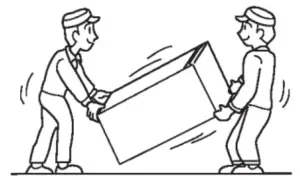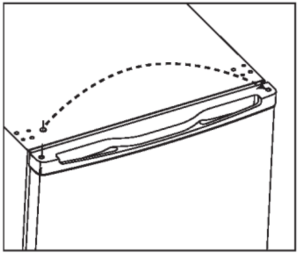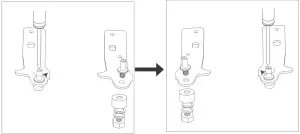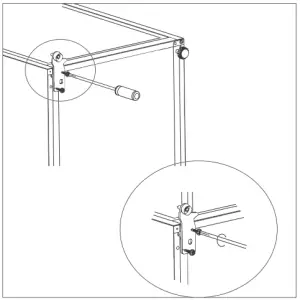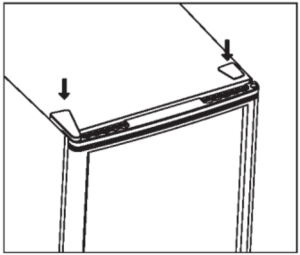Refrigerators ITLP 130 Freestanding Refrigerator
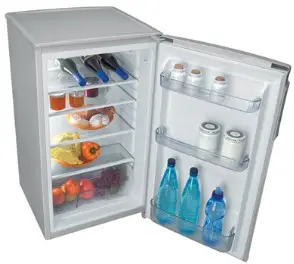
Thank you for purchasing this product.Before using your refrigerator, please carefully read this instruction manual in order to maximize its performance. Store all documentation for subsequent usage or other owners. This product is intended solely for household use or similar applications such as:– the kitchen area for personnel in shops, offices and other working environments– on farms, by clientele of hotels, motels and other environments of a residential type– at bed and breakfasts (B & B) – For catering services and similar applications not for retail sale. This appliance must be used only for purposes of storage of food, any other use is considered dangerous and the manufacturer will not be responsible for any omissions. Also, it is recommended that you take note of the warranty conditions.
SAFETY INFORMATION
The refrigerator contains a refrigerant gas (R600a: isobutene) and insulating gas (cyclopentane), with high compatibility with the environment, that are, however, inflammable. We recommend that you follow the following regulations so as to avoid situations dangerous to you:
Before performing any operation, unplug the power cord from the power socket.
- The refrigeration system positioned behind and inside the appliance contains refrigerant. Therefore, avoid damaging the tubes.
- If in the refrigeration system a leak is noted, do not touch the wall outlet and do not use open flames. Open the window and let air into the room. Then call a service center to ask for repair.
- Do not scrape with a knife or sharp object to remove frost or ice that occurs. With these, the refrigerant circuit can be damaged, the spill from which can cause a fire or damage your eyes.
- Do not install the appliance in humid, oily or dusty places, nor expose it to direct sunlight and to water.
- Do not install the appliance near heaters or inflammable materials.
- Do not use extension cords or adapters.
- Do not excessively pull or fold the power cord or touch the plug with wet hands.
- Do not damage the plug and/or the power cord; this could cause electrical shocks or fires.
- It is recommended to keep the plug clean, any excessive dust residues on the plug can be the cause fire.
- Do not use mechanical devices or other equipment to hasten the defrosting process.
- Absolutely avoid the use of open flame or electrical equipment, such as heaters, steam cleaners, candles, oil lamps and the like in order to speed up the defrosting phase.
- Do not use or store inflammable sprays, such as spray paint, near the appliance, it could cause an explosion or fire.
- Do not use electrical appliances inside the food storage compartments, unless they are of the type recommended by the manufacturer.
- Do not place or store inflammable and highly volatile materials such as ether, petrol, LPG, propane gas, aerosol spray cans, adhesives, pure alcohol, etc. These materials may cause an explosion.
- Do not store medicine or research materials in the appliance. When the material that requires a strict control of storage temperatures is to be stored, it is possible that it will deteriorate or an uncontrolled reaction may occur that can cause risks.
- Maintain the ventilation openings in the appliance enclosure or in the built-in structure, free of obstruction.
- Do not place objects and/or containers filled with water on the top of the appliance.
- Do not perform repairs on this appliance. All interventions must be performed solely by qualified personnel.
- This appliance can be used by children aged from 8 years and above and by persons with reduced physical, sensory or mental capabilities or with a lack of experience and knowledge; provided that they have been given adequate supervision or instruction concerning how to use the appliance in a safe way and understand the hazards involved.
- Children should not play with the appliance. Cleaning and user maintenance should not be made by children without supervision”FOR appliances without a 4-star compartment: this refrigerating appliance is not suitable for freezing foodstuffs”“FOR a free standing appliance: this refrigerating appliance is not intended to be used as a built-in appliance”
Overview
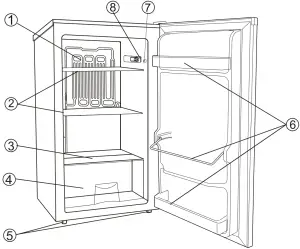
- Evaporator
- Shelves of refrigerator chamber
- Glass cover
- Crisper box
- Leveling Legs
- Bottle RackB
- Door Switch
- Temperature Control Knob
The most energy-saving configuration requires drawers, food box and shelves to be positioned in the product, please refer to the above pictures.
Correct positioning
Well VentilatingThere is need of good ventilation around the refrigerator for easy dissipation or he at. high efficiency or refrigeration and low power consumption. For this purpose, sufficient clear space should be need around the refrigerator. Its back is at least 100mm away from the wall, its sides at least have a space of 100mm separately and the height from over its top is not less than 200mm. A clear space should be left to open its doors to 160º.
Power SupplyThe refrigerator is only applied with power supply of single phase alternating current of (220-240)V~/50Hz;230V~/60Hz.lf fluctuation of voltage in the district user is of so large that the voltage exceeds the above scope, for safety sake, be sure to apply a.c. automatic voltage regulator to the refrigerator. The refrigerator must employ a special power socket instead of common one with other electric appliances. Its plug must match the socket with ground wire.
Power Line CordThe cord should be neither lengthened nor folded into coil during operation.Moreover, it is forbid den that cord is kept close onto the compr essor at the back of the refrigerator, the surface temperature of which is quite high when operating. Touching with it would deactivate the insulation or cause leakage for electricity.
Protection from MoistureAvoiding placing the refrigerator in a place where heavy moisture is present so as to minimize possibility or rusty for its metal parts. Still more. the refrigerator is forbidden to be directly sprayed by water, otherwise, poor insulation and current leakage would occur.
Protection from HeatThe refrigerator should be far away from any heat source or direct sunshine.
Fixing StableFloor on which refrigerator will be placed must be flat and solid. It should not be laid on any soft material such as foam plastic, etc. If the refrigerator is not on the same level, adjust the screws suitably. The refriger ator should not be placed near anything which may echo.
Keep Away from DangerIt is inadvisable that the refrigerator is placed near any volatilizabte or combustibl e such as gas, petrol, alcohol, lacquer and banana oil, etc. The above-mentioned objects can not be stored in the refrigerator.
MovingWhen fixed or moved, the refrigerator can not be set horizontally or declined to more than 45º or upside-down.
POSITIONINGInstall the appliance at a location where the ambient temperature corresponds to the climate class indicated on the rating plate of the appliance:– – Extended temperate (SN): ‘this refrigerating appliance is intended to be used at ambient temperatures ranging from 10 °C to 32 °C’– – Temperate (N): ‘this refrigerating appliance is intended to be used at ambient temperatures ranging from 16 °C to 32 °C’– – Subtropical (ST): ‘this refrigerating appliance is intended to be used at ambient temperatures ranging from 16 °C to 38 °C’– – Tropical (T): ‘this refrigerating appliance is intended to be used at ambient temperatures ranging from 16 °C to 43 °C’
Position different food In different compar1ments according to be below table
|
Refrigerator compartments |
Type of foods |
| Door or balconies of fridge compartment |
|
| Crisper drawer (salad drawer) |
|
| Fridge Sheff – middle |
|
| Fridge sheff – top |
|
- It’s suggested to set the temperature at 4°C in the fridge compartment, and, whether possible. at -18°C in the freezer compartment.
- For most food categories, the longest storage time in the fridge compartment is achieved with colder temperatures. Since some particular products (as fresh fruits and vegetables) may be damaged with colder temperatures, it is suggested to keep them in the crisper drawers, whenever present. If not present, maintain an average setting of the thermostat.
- For frozen food, refer to the storage time written on the food packaging. This storage time is achieved whenever the setting respects the reference temperatures of the compartment (one-star -6°C, two stars -1 2°C. three stars-18°C)
Temperature setting recommendation
|
Temperature Setting Recommendation |
||
|
Environment Temperature |
Freezer compartment |
Fridge compartment |
|
Summer |
/ |
|
|
Normal |
/ |
|
|
Winter |
/ |
|
- Information above give users recommendation of temperature setting.
Reversing the door swing
Reversing the Door SwingTools required: Phillips style screwdriver / Flat bladed screwdriver / Hexagonal spanner
- Ensure the unit is unplugged and empty.
- Adjust the two levelling feet to their highest position.
- To take the door off it is necessary to tilt the unit backwards. You should rest the unit on something solid so that it will not slip during the door reversing process.
- All parts removed must be saved to do the reinstallation of the door. Do not lay the unit flat as this may damage the coolant system.
- We recommend that 2 people handle the unit during assembly.
- Tilt the unit slightly towards the rear and prop it securely. Two people are required to tilt the unit during the door reversal process.

- Remove the top right hinge cover.

- Undo the screws. Then remove the hinge bracket.

- Remove the top left screw cover.

- Move the core cover from left side to right side. And then lift the door and place it on a padded surface to prevent it from scratching.

- Remove the screws and bottom hinge. Then remove the adjustable feet from both side.

- Unscrew and remove the bottom hinge pin, turn the bracket over and replace it.

- Refit the bracket fitting the bottom hinge pin. Replace both adjustable feet.

- Place the door back on. Ensure the door is aligned horizontally and vertically so that the seals are closed on all sides before finally tightening the top hinge.
- Insert the hinge bracket and screw it to the top of the unit.
- Use a spanner to tighten it if necessary.

- Put the hinge cover and the screw cover back.

- With the door closed, check that the door is aligned horizontally and vertically and that the seals are closed on all sides before finally tightening the bottom hinge. Re-adjust the levelling feet as needed.

Cautions
- It must be checked that the voltage used should be the same as the rated voltage before the refrigerator is used.
- Water contained in food or getting into air inside the refrigerator by opening doors may form a layer of frost inside, It will weaken the refrigerator when the frost is thick,Defrosting on evaporator is operated manually. When the biggest thickness of the frost layer on the evaporator increase to 4mm, it must be turn off the power supply to defrost.The defrost water flow into the water collection pan through the drain port and evaporate by the heat of compressor.
- If the supply cord of this appliance is damaged, it must only be replaced by a repair shop appointed by the manufacturer, because special purpose tools are required.
- It is dangerous to alter the specifications or attempt to modify this products in anyway
- When you change the light bulb or when the refrigerator is not in use for tong periods, disconnect it from the electricity supply ..
- Wait for 5 minutes before restart the unit after the power supply blackout..
Maintenance
- The refrigerator should be cleaned and maintained once a month.
- When performing maintenance, make absolutely sure that the power plug is first disconnected from the power outlet
- Wipe the inner and outer surface of the refrigerator and its accessories with wet cloth. If they are too dirty, scrub them with neutral detergent, and then c:lean them with water and dry them with clean cloth. After this, .a small quantify ,of glass wax is recommended to polish the refrigerator surface with a flannelette.
- For cleaning, don’t use hot water diluent, petrol, alcohol, kerosene, washing powder, cleanser, aikailinous detergent, acid, Chemical cloth, etc., So as not to damage the lacquer coat and plastics., It is forbidden than the refrigerator is directly sprayed with water. Otherwise, it w1ould cause rusty or weaken the insulation.
- Be careful to upkeep the sealing rubber bars ,of the doors. They should always be cleaned.
- If the plastic parts in refrigerator remain contaminated for a long time by oil (animal or vegetable),, they will be easy aged and possibly cracked. The drain pan gets dirty very easily if it is not cl1eaned regularly,! bad odours will be produced, get into the habit ,of cleaning this pan regularly.
Troubleshooting
- When the refrigerator does not workCheck if there is a power failure.Check if the power plug is plugged into the power outlet.Check that the fuse has not blown.
- When the refrigerator is cooling excessivelyThe temperature control dial may be set too high.If you place foodstuffs containing a lot of moisture directly under the cool air outlets, they will freeze easily. This does not indicate a malfunction.
- When the refrigerator is not cooling sufficientlyThe food may be packed too tightly together which will block the flow of cool air.You may have put something hot or a lot of foodstuffs into the refrigerator .The door may not have been closed properly.The door gaskets may be damaged.The refrigerator may not be ventilated.There may be insufficient clearance between the refrigerator and the surfacesImmediately both sides and above.The temperature control dial may not be set properly.
- When the defrosting water overflows inside the refrigerator and onto the floor.Check that the drain pipe and the drain hose are not clogged.Check that the drain pan is housed properly.Whether the thickness of the frost layer was thicker than 4mm when you make the refrigerator defrost
- When condensation form on the outside of the refrigerator.Condensation may form on the outside when the humidity is high such as during a wet season. This is the same result as the condensation formed when chilled water is poured into a glass. It does not, therefore, indicate a failure, wipe dry with a dry cloth.
- When you hear a sound like water flowing .A sound like water flowing is the refrigerant flowing. It does not Indicate a malfunction.
- When the cabinet’s side panel heats upThe side panel of the cabinet will heat up when the door is opened or closed frequently, when starting the unit and when the unit operates in summer with high ambient outside temperature, In such case, do not touch the panel, it results from the dissipation of the heat from inside the cabinet, and it does not mean that something is wrong with the refrigerator.
Technical specifications
GUARANTEEMinimum guarantee is: 2 years for EU Countries, 3 years for Turkey, 1 year for UK, 1 year for Russia, 3 years for Sweden, 2 years for Serbia, 5 years for Norway, 1 year for Morocco, 6 months for Algeria, Tunisia no legal warranty required.
AVAILABILITY OF SPARE PARTS“Thermostats, temperature sensors, printed circuit boards and light sources are available for a minimum period of seven years after placing the last unit of the model on the market. Door handles, door hinges, trays and baskets for a minimum period of seven years and door gaskets for a minimum period of 10 year, after placing the last unit of the model on the market”.
For further information about the product, please consult https://eprel.ec.europa.eu/ or scan the QR on the energy label supplied with the appliance To contact the technical assistance, visit our website: https://corporate.haiereurope.com/en/ Under the section “website”, choose the brand of your product and your country. You will be redirected to the specific website where you can find the telephone number and form to contact the technical assistance.
References
[xyz-ips snippet=”download-snippet”]

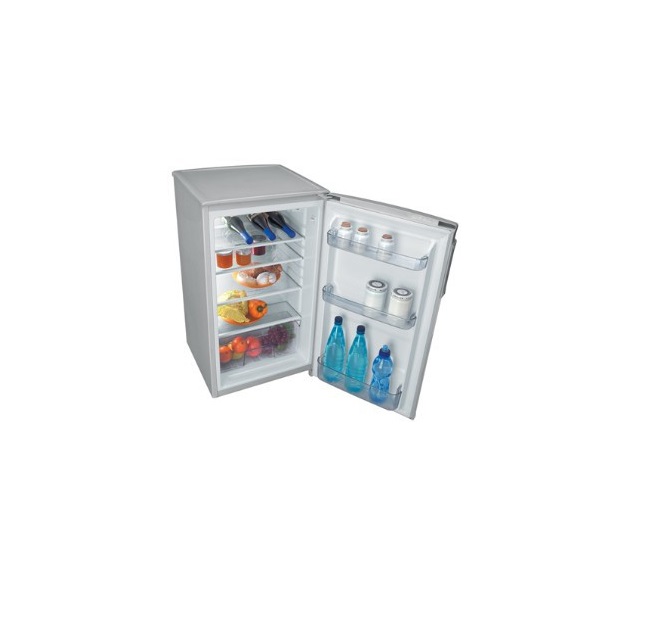
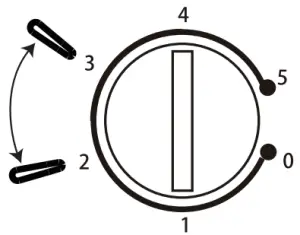 Seton 2-3
Seton 2-3 Seton 2-3
Seton 2-3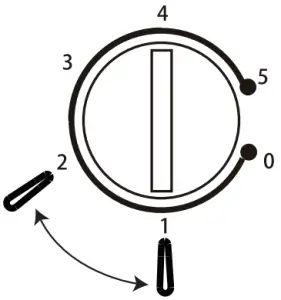 Set on 1-2
Set on 1-2